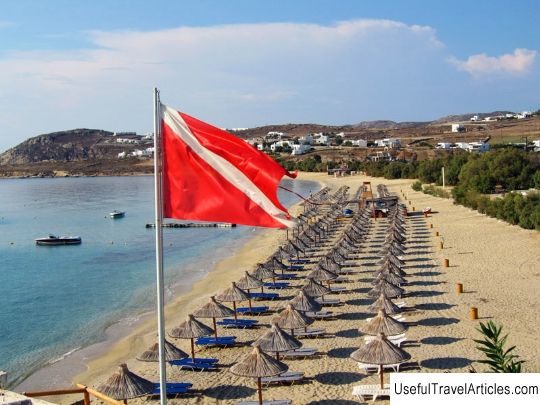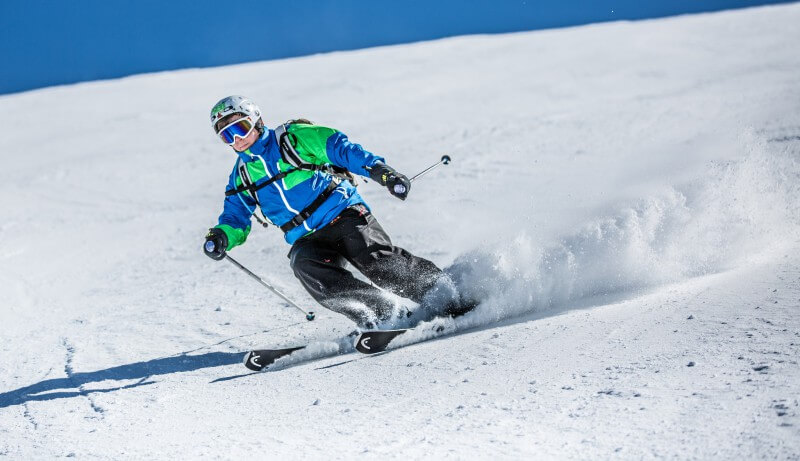Diver's equipment
Rating: 8,2/10 (433 votes)  Diver's equipment. Tips for BeginnersWanting to go diving, many travelers and guests of seaside resorts ask themselves the main question -" and where to start? The answer here will be unambiguous – you should always start with the selection of the diver's equipment. This, like any type of outdoor activity, will require significant investments from you, but, like everywhere else – investments guarantee safety and comfort. Of course, many use the services of diving centers, where all the equipment can be rented. Moreover, many professional divers only rely on 'rental' oxygen cylinders – it is too unsafe to fill them yourself, and even more so – store at home or in a garage. However, apart from cylinders, There are several other important items in a diver's outfit, which are better to always have with you, rather than rent. We have prepared a list of equipment that you will need for your first dive under the water, and for all other deep dives.  Diver in full gear WetsuitBasis of diver's equipment – wetsuit. These are the very skin-tight outfits that can be seen in any diving video or movie. The closest fit to the body ensures maximum heat retention. Wetsuits are made of modern material – neoprene. Generally speaking, they are divided into two types: `` dry ''; and wet. The names speak for themselves – one type is permeable to moisture, the other – no. The debate about which type of wetsuit is best continues. There is one objective reason against this dispute - and ndash; suits 'wet' not recommended for deep diving.  "Dry" wetsuit BCDDetail of diver's equipment, the quality of which is to a certain extent more important than the quality of the wetsuit. BCD – it is, in fact, a life jacket that allows you to float from the depth, or vice versa – stay under water. The compensator works by filling or bleeding air coming from an additional cylinder. Accordingly, if there is air in it – the diver comes up, all the air must be bleed off to dive. Modern models of compensators are of three types – vest, wing and half wing. The last type – the most expensive, and in some cases it is part of a professional wetsuit. RegulatorIn simple terms, Regulator – It `s that, what the diver breathes with. It is best to select it individually, in size and shape, so that there is not even the slightest sign of discomfort. If we talk about functionality, then the regulator `` aligns '' cylinder pressure and delivers air directly to the diver's mouth. They are divided into several types, depending on the temperature of the water in which you plan to dive. The most expensive regulators – these are models with water treatment filters and models designed for cold water.  Breathing regulator Weight belt and weightsA piece of equipment, mandatory only in one case - – if you are going to dive on your own. The weight belt serves as a kind of belay if you need to urgently rise to the surface, dropping the ballast. Ballast – this is the load. GlovesThe diver's gloves essential for every dive protect your hands not only from low temperatures, but also from the environment, which is not always friendly under water. They are made of neoprene, and distinguish between – by thickness. The most popular models – these are three-millimeter `` tropical '' gloves format. BotsWhat divers call the stern word bots – rather, it resembles high galoshes or even sneakers. The thin lower leg provides a snug fit, while the specially shaped polyurethane sole protects against rocky bottoms.  Diving boots SocksNo diver will wear boots without socks. These socks are made of the same neoprene as the suit, and their main task is - – keep the diver's feet warm. The thickness of the sock is different: from 3 to 9 millimeters, you need to choose depending on the climate and water temperature at the dive site. FinsFins are of two types – with closed and open heels. The first type fits snugly to the leg, and, in fact, replaces the boots. For this reason, such fins are put on immediately over the socks, which should be as thick as possible, for additional warmth and fixation on the leg. With an open heel, fins can be worn only over the bot. In this case, the thickness of the sock does not play any role. HelmetIf the main task of a skier's or climber's helmets is – shock protection, diving helmets are responsible for keeping warm. In their appearance, they, rather, resemble motorcycle liners, tightly fitting to the head, neck and part of the face. Helmets for diving are made of neoprene – same, like a wetsuit. Most often, the helmet has a dry type so that the hair remains calm and does not create discomfort. In addition, helmets are `` wet '' types are not suitable for deep diving.  Diving helmet Effectiveness of diving helmetsAny diving instructor on the the first lesson will say – when diving to a depth due to the open head, up to 40% of the heat of the whole body is lost. Therefore, the most expensive wetsuits always have the same hood, which serves as a helmet. If there is no hood, then special helmets are sold in professional stores, but even here experienced divers advise in their own way. And the gist of this advice is that even the most expensive `` special '' The helmet does not provide thermal insulation to the diver as much as the most ordinary swimming cap does. Another advantage of the cap is that it does not restrict the diver's head turns. If the hood can cause insufficient visibility, then `` independent '' a helmet does not allow this to happen. And, of course, even the most expensive hat will cost much less than the `` inexpensive '' ones. models of neoprene helmets for diving. MaskMask – it is one of the indispensable attributes of a diver, not only protecting the eyes and part of the face, but also covering the nose from water. Modern models are made of durable plastic and silicone, are divided into children's and adult models, and also have a diopter glass if the diver has vision problems. Important: Strap on the mask is designed so that it is not lost when surfacing, or when diving unsuccessfully. The classic mask should hold due to the `` sucked '' when putting on air and water pressure.  Diver mask Full face mask – advantages and disadvantagesMany experienced divers advise at least once to use the full face max for diving – the most modern and safe mask of all existing models. Its name speaks for itself – it completely covers the diver's face, freeing his mouth and allowing breathing, as on land. The regulator is fed into a special air duct to the left or right of the mask, so there is no need to worry about fixation – everything is securely fastened with nuts. Another `` chip '' face masks – availability of radio communication. No need to memorize sign language and special commands – you can always talk about your problems to the speaker. The main disadvantage of a full face mask is – the regulator approaches it almost at a right angle, increasing the distance to the cylinder. In reality, this means that the risk of elementary catching on some snag or coral ledge increases. Another real disadvantage of such masks is – this is the price. It will cost such a pleasure, like a professional suit of `` dry '' type with a compensator. But, for the comfort and safety of diving, many are willing to pay even that kind of money. SnorkelSnorkel for a diver – an accessory rather complementary, intended for snorkeling in the shallows or for swimming on the surface. There are many models of such pipes, so if you still need it, you should choose it last, based on the remaining funds. We also recommend reading Things not to do in Berlin Topic: Diver's equipment. |




